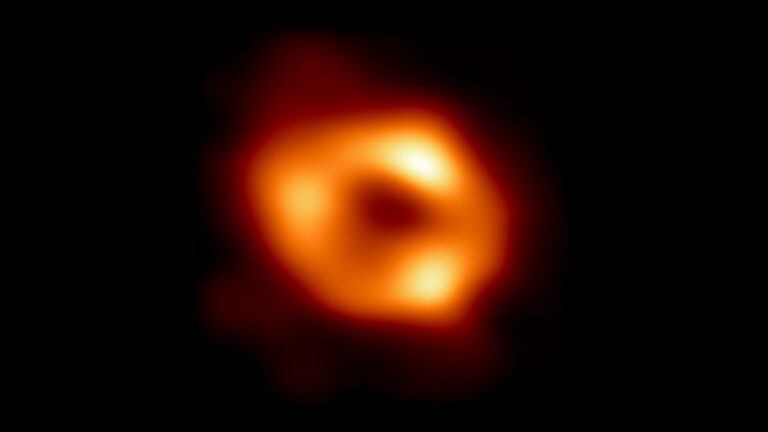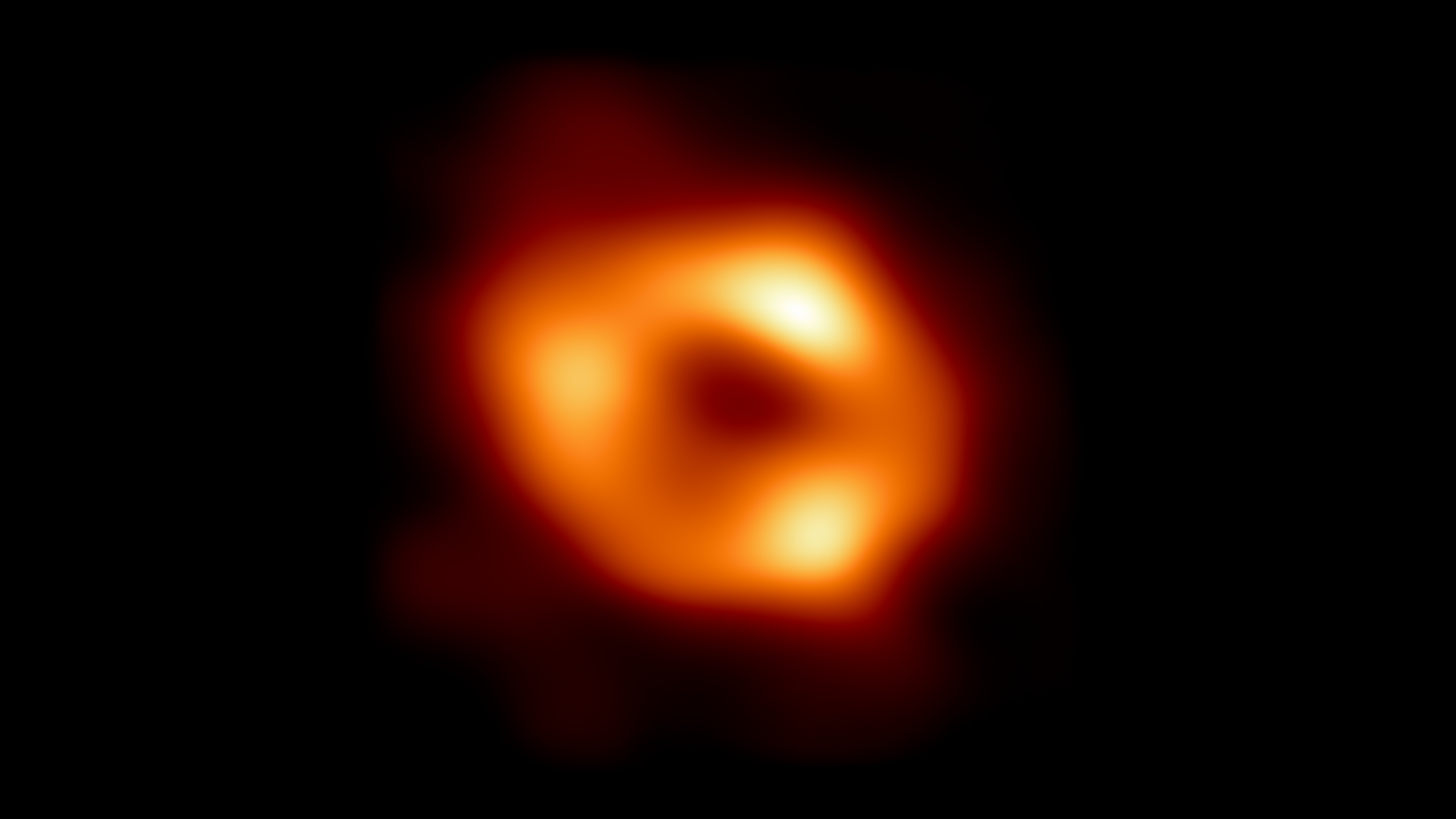
[ad_1]

At the center of our galaxy sits a dark enigma, a supermassive black hole named Sagittarius A*. Astronomers have known about the existence of Sgr. A* for some time, and even snagged a spectacular image of it in 2022, but getting exact measurements of its size and activity have proven elusive.
But now, in new findings from the Max Planck Institute for Extraterrestrial Physics (MPE), a group of astronomers have determined, with high accuracy, the mass and radius of Sgr A*.
Specifically, Sgr A* was found to come in at a whooping 4.297 million solar masses — with a radius smaller than that of Venus‘ orbit around the sun. They deduced this information by studying the luminous gas found in this enormous void’s orbit.
Basically, the researchers used data from the near-infrared interferometer at the European Southern Observatory’s Very Large Telescope Interferometer (VLTI) to track electromagnetic emissions of gas swirling around the black hole. They were on the lookout for flares — bright flashes of electromagnetic radiation that might happen once or twice a day. These flares, in short, allowed the astronomers to trace the motion of gas surrounding Sgr A*.
Related: The hunt is on in neighboring galaxy for 2nd closest monster black hole to Earth
The team analyzed flares observed in 2018, 2021 and 2022. This combined data allowed the researchers to estimate the mass of the black hole with a high level of accuracy, they say, which was important because it provides a new, independent measurement of the black hole’s mass. Thankfully, the results sat in accordance with previous estimates.
Those prior measurements were based on the orbital trajectories of stars around Sgr. A*, but those stars are much further away than the newly measured flares appear to be meaning the results were technically less reliable.
The researchers refer to what’s known as “gravitational radii” in calculating the mass of Sgr. A*. The gravitational radii value of an object has to do with the radial distance of the object; it’s also proportional to that object’s mass. For Sgr. A*, the radii represents the distance from the center of the black hole to the event horizon, which is the barrier between the observable universe and whatever’s inside the black hole. Beyond the event horizon, even light gets overtaken by the black hole’s immense gravitational strength. The gravitational radii of Sgr A* turned out to be equal to roughly 0.1 astronomical units, or one tenth the distance from the Earth to the sun.
While this might sound small, it’s actually relatively large, as the sun’s gravitational radii value is equal to approximately 3 kilometers (1.9 miles). This is also the size the sun would need to be compressed to before it can collapse into a black hole.
”The mass we derived now from the flares at just a few gravitational radii is compatible with the value measured from the orbits of stars at several thousand gravitational radii,” Diogo Ribeiro, who was responsible for the study’s theoretical modeling at the Max Planck Institute for Extraterrestrial Physics, said in a statement.
“This strengthens the case for a single black hole at the center of the Milky Way,” he adds.
Researchers are also excited about what treasures these measurements might contain regarding the formation of structures in the Galactic Center. According to Antonia Drescher, who was also involved in the study measurements, the orientation of the flare orbits hint at a physical connection with a stellar disk sitting much further away from the black hole.
”It is great to see the repeated, similar behavior of the flares,” Drescher said in the statement. ”All of them show a clockwise looped motion on the sky; all have a similar radius and a similar orbital period. This is really beautiful to see.”
The team hopes data collected from the flares may eventually provide the scientific community about information on the spin of the black hole too, something that still remains a mystery.
A study on these findings was published in September in the journal Astronomy & Astrophysics.
[ad_2]